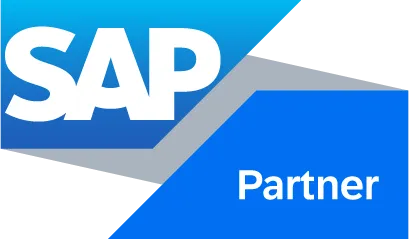Sovos Compliance Cloud
Indirect Tax Suite
Indirect Tax Suite for SAP
Sovos Indirect Tax Suite for SAP
Description
Sovos Indirect Tax Suite for SAP delivers the most comprehensive and future-proof solution, addressing tax determination, e-invoicing and reporting.
Features
Ensure accuracy and reduce risks with real-time automation.
Automate tax workflows, freeing up resources for strategic initiatives.
Stay aligned with SAP transformations and evolving tax mandates.
Chat with a Specialist
Indirect Tax Suite for SAP
Ready Today, Future-Proof for Tomorrow
The tax compliance landscape is evolving rapidly, driven by digital transformation, regulatory changes, and the growing demand for real-time reporting and automation.
and a future-ready approach aligned with SAP’s Clean Core strategy, Sovos empowers companies to simplify compliance, reduce risks, and scale operations efficiently. Whether your business is transitioning to S/4HANA or staying with ECC, Sovos offers the most reliable tax compliance solution available today. Global Outbound eInvoice
See Certification
Transact Accurately
Global Inbound eInvoice
See Certification
Transact Accurately
Turkey eInvoice, eDelivery, eLedger (BTP Integration)
See Certification
Transact Accurately
Turkey eInvoice (Classic ABAP)
See Certification
Transact Accurately
North American Tax Determination
See Certification
Determine Globally
US Tax Determination (S/4HANA Public Cloud)
See Certification
Determine Globally
Rest of the World Tax Determination
See Certification
Determine Globally
Brazil Tax Determination
See Certification
Determine Globally
VAT Filing
See Certification
Report Everywhere
Sovos Indirect Tax Suite SAP Certifications

Learn More
Global Inbound/Outbound eInvoice
SAP Store
Transact Accurately
Turkey eInvoice
(BTP Integration)
(BTP Integration)
SAP Store
Transact Accurately
Turkey eInvoice (Classic ABAP)
SAP Store
TRANSACT ACCURATELY
Turkey eInvoice (DRC Integration)
SAP Store
TRANSACT ACCURATELY
France eInvoice
SAP Store
TRANSACT ACCURATELY
North American Tax Determination
SAP Store
Determine Globally
Rest of the World Tax Determination
SAP Store
Determine Globally
Brazil Tax Determination (BTP Integration)
SAP Store
Determine Globally
US Tax Determination (S/4HANA Public Cloud)
SAP Store
Determine Globally
VAT Filing
SAP Store
Report Everywhere
SAP Store Listings
Learn More
Simplifying Global Indirect Tax Compliance for SAP Users
Learn More
Why Sovos for SAP?
Learn More
Certified Integration with SAP
Aligns with SAP’s Clean Core strategy to minimize customizations and preserve system integrity.
Global Tax Expertise
A team of 100+ regulatory experts monitors global tax changes, keeping your business compliant.
Scalable Solution
Seamlessly handles compliance for growing businesses across multiple jurisdictions.
Customer Success Stories
Learn More
“Sovos Filing gives us greater access to data for Finance in order to see monthly transactions and returns online and reconcile against SAP for anomalies.”
“Selected the Sovos eInvoice and eAccounting regional solutions to simplify its compliance efforts in Brazil and Mexico, which seamlessly integrated within their existing systems.”
“Without good software, it would be impossible to adjust to the quickly changing VAT reporting obligations. We would not be able to meet these new regulations on time without Sovos.”
Future-Proofing your Compliance
Alignment with SAP Clean Core Strategy
With SAP’s push towards Clean Core, businesses are being encouraged to reduce customizations and adopt cloud-based extensions to minimize technical debt and improve system performance.
Sovos is fully aligned with SAP’s Clean Core strategy, providing tax compliance solutions.
Compliance Network
Get Started
A complete solution for managing global e-invoicing compliance and e-reporting.
Sovos Products
Sovos CertManager
Get Started
Tax exemption certificate management software
Sovos Products
Sovos Use Tax Manager
Get Started
Automate the calculation, tracking and reporting of use tax
Sovos Products
Additional Indirect Tax Suite Products
Learn More
Additional Resources
Learn More
Webinar
Global Indirect Tax Determination in the SAP S/4HANA and Always-On Compliance Era
Watch now
eBook
Indirect Tax Software Suites: A Buyer's Guide
Read More
Blog
SAP: Keep the Core Clean for Tax and Compliance
Read More
eBook
A Modern Approach to Indirect Tax Automation
Read More
Ready to get started? Reach out to our experts to learn more
Talk to an Expert